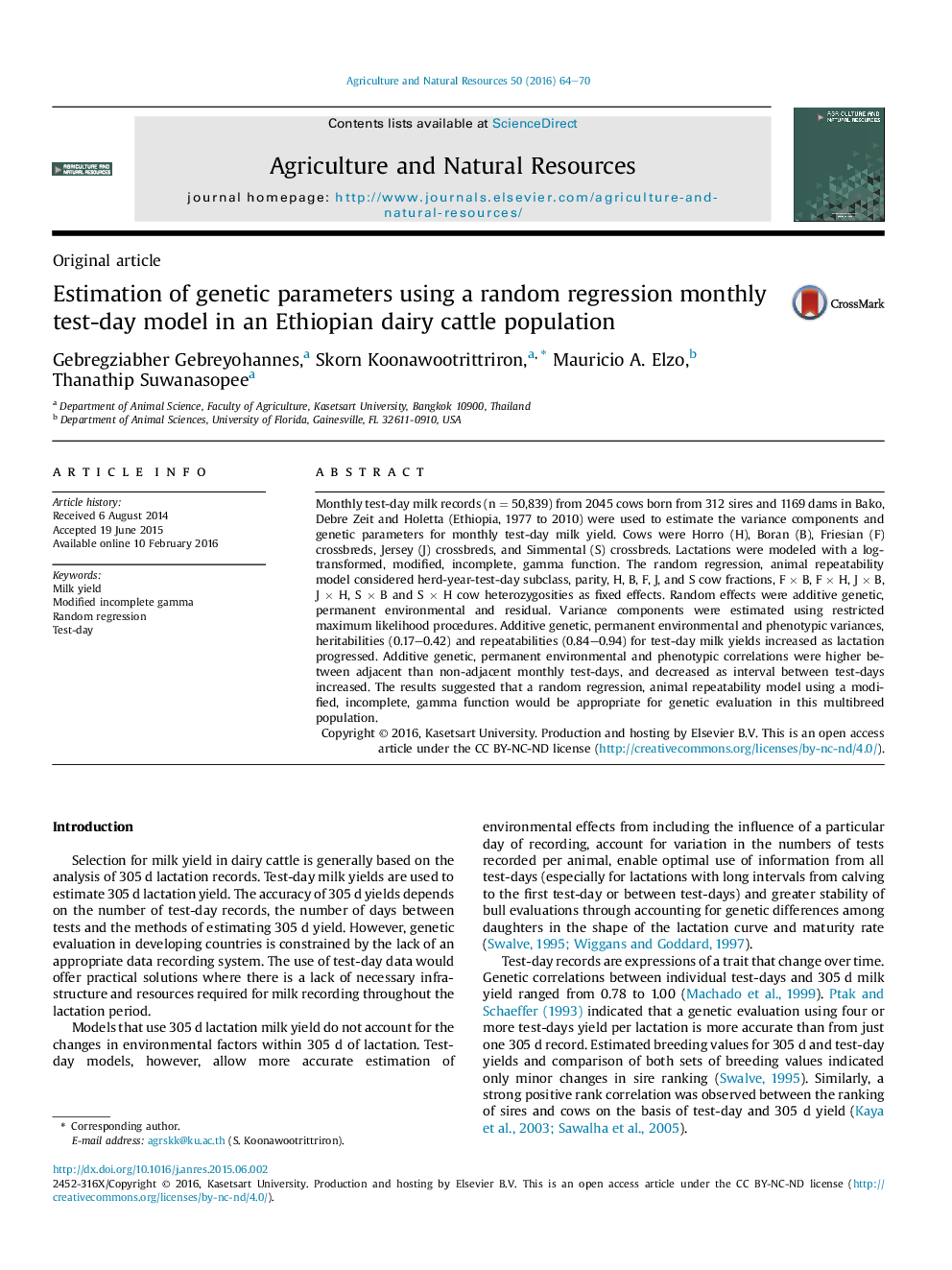| کد مقاله | کد نشریه | سال انتشار | مقاله انگلیسی | نسخه تمام متن |
|---|---|---|---|---|
| 83103 | 158685 | 2016 | 7 صفحه PDF | دانلود رایگان |
Monthly test-day milk records (n = 50,839) from 2045 cows born from 312 sires and 1169 dams in Bako, Debre Zeit and Holetta (Ethiopia, 1977 to 2010) were used to estimate the variance components and genetic parameters for monthly test-day milk yield. Cows were Horro (H), Boran (B), Friesian (F) crossbreds, Jersey (J) crossbreds, and Simmental (S) crossbreds. Lactations were modeled with a log-transformed, modified, incomplete, gamma function. The random regression, animal repeatability model considered herd-year-test-day subclass, parity, H, B, F, J, and S cow fractions, F × B, F × H, J × B, J × H, S × B and S × H cow heterozygosities as fixed effects. Random effects were additive genetic, permanent environmental and residual. Variance components were estimated using restricted maximum likelihood procedures. Additive genetic, permanent environmental and phenotypic variances, heritabilities (0.17–0.42) and repeatabilities (0.84–0.94) for test-day milk yields increased as lactation progressed. Additive genetic, permanent environmental and phenotypic correlations were higher between adjacent than non-adjacent monthly test-days, and decreased as interval between test-days increased. The results suggested that a random regression, animal repeatability model using a modified, incomplete, gamma function would be appropriate for genetic evaluation in this multibreed population.
Journal: Agriculture and Natural Resources - Volume 50, Issue 1, January 2016, Pages 64–70
